|
I am working on a picture book about acorn woodpeckers, and what better colors to use in the art than acorns and “oak apples”! If you ever examined an oak tree, you might see some bring pinkish “apples” or the more common brown looking oak galls.
I was in a park in Lodi, CA, and all the oak trees had the most splendid looking “apples!” It was a beautiful sight! These “apples” are caused by certain wasps that lay their eggs in the bark, causing the tree to form a gall. The wasp larvae live inside this protective ball until it is time for them to grow up and leave. If you see a tiny hole in the gall this is where the wasp exited! Oak apples have been used since Medieval days in Europe as a fine dark brown ink for writing manuscripts as it doesn’t fade. In fact, the US Constitution was written in oak gall ink! Instructions: 3 “oak apples” also known as oak galls. Handful of old acorns. Break into tiny pieces. I was surprised how HARD the oak apples were! I let it soak in a pot with a small amount of water (just barely covering the galls) for 15 mins before putting it on the stove on low heat for 20 mins. As I wait, I jot down my list of plant colors I’m thinking of using: Beet: for the woodpeckers bright red crown. Charcoal: for the dark greys of the woodpeckers. Blue Spiralina: adding some blues to the woodpeckers. CA walnut: for rich deep brown (many people also use walnuts as a natural hair dye for a deep, dark brown.) After the 15 minutes I turned off the fire and let it steep for another 30 mins. And….when I checked on it, the oak galls re-absorbed all of the liquid! So I added a little bit of water to reconstitute. Then strained it into a jar. The color didn’t come out as dark as I wanted - probably because I added a little bit of water at the end. Next time I will skip the steeping part and strain it after boiling it for 30 mins. If one wanted to make ink, the process is a bit different, as you’ll need to add some iron to the liquid to really darken the color. But for now, I will just try this as is.
0 Comments
A beautiful herb which I have fond memories of harvesting fresh at Lyon Arboretum on O’ahu, Hawaii. They grow extremely well in the tropical climate of Hawaii and boy, were they muddy! It felt like we were washing pounds of mud away! Turmeric is known as o’lena in Hawaiian. This herb was used by Native Hawaiians for food, medicine, and dye. The turmeric roots here are large and don’t look as “dried” out as the ones sold at the groceries. Fresh cut turmeric has a gold orange color to it..and it stains everything! I was taking Hawaiian herbal healing classes (La’au Lapa’au) at Windward University and we made an anti-cold tincture with fresh o’lena, garlic, and hot chili peppers. It was topped off with vodka and left to steep for a few weeks. When we felt like we got a cold we took some of this spicy garlic mixture! Not only are they a pretty plant and make fantastic color, turmeric has strong anti-inflammatory and antioxidant properties and it does an even better if you boost it with a little bit of black pepper (as there is something in the black pepper that activates certain compounds in turmeric). One way I enjoy turmeric’s health benefits is adding a small spoonful of it in my morning coffee (Thanks to Anais for getting me on this!) Other great health benefits of turmeric includes: better memory blood sugar balancer helps protect and soothe the stomach relieves gas and bloating has anti-food poisoning properties helps relieve arthritis pain To fully boost turmeric's health properties, it is best to add a little bit of black pepper. As the compounds in black pepper helps make turmeric more bio available. 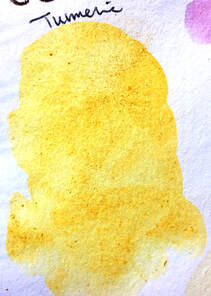 As you can see, turmeric makes a fantastic warm yellow. I used powdered turmeric and steeped it on low heat for a few minutes. This is one of the easiest pigments to make and I hope to grow turmeric one day so I can use the fresh roots! 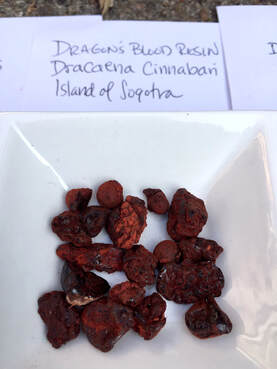 Dragon’s Blood doesn’t come from a slain dragon, but from a very odd-looking tree found on the remote Socotra Island in the Arabian Sea. Due to its remoteness, one third of all plant life found on this island is not found anywhere else. This is “true” Dragon’s Blood (Draconi Cinnabari) – the Dragon’s Blood named in medieval occult and alchemy manuscripts. This is also the Dragon's Blood that can be used as ink. Dragon's Blood resin is formed when cuts are made on the tree trunk and the red liquid oozes out, looking very much like blood! This is the tree’s natural way of healing and sealing the wound. This “blood” is dried and formed into balls. There are many amazing health benefits to Dragon’s Blood. It’s great for any cuts or wounds as it has antiseptic, antibacterial, and anti-inflammatory properties. It is typically found in salves and ointments due to its great healing effects on skin issues. This Dragon’s Blood has a wonderful spicy and woodsy smell, while the more commonly available Dragon’s Blood (Daemonorops draco) that you get at a new age store has a sweet and floral note. This type of Dragon’s Blood comes from Indonesia and is harvested from a type of palm fruit. In order to make Dragon’s Blood Ink, you’ll need the “real” Dragon’s Blood (Draconi Cinnabari), as this fully dissolves in alcohol. If you try making this with Indonesian Dragon’s Blood, it won’t dissolve in alcohol. Making it is very simple. Get super high proof alcohol (Everclear or rubbing alcohol) and grind the resin into fine pieces. All you gotta do is put it in a small jar and top it off with alcohol, shaking it vigorously! It'll get darker over the next couple of days and then you can use it like a writing ink. As you can see from the pictures, it really does look like blood! In the spiritual sphere, Dragon’s Blood is very protective and good at banishing heavy and negative energies. So if you feel like your house needs some spiritual cleansing, burn some Dragon’s Blood! Although it produced a wonderful red, I couldn’t paint with it as the alcohol soaked through the paper. It works better as a writing ink for now…but it is something I will keep playing with and hopefully it will be part of my plant palette in the future! 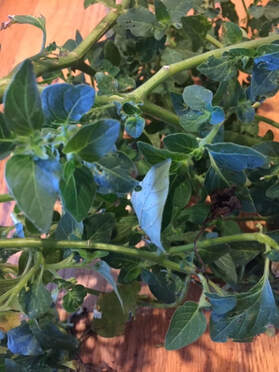 Ashwaganda is one of the most popular and widely used Ayurvedic herb (Ayurveda is traditional Indian medicine and has been around for thousands of years). It is known as Indian Ginseng and has similar benefits as Chinese Ginseng: boosting vitality, supporting the immune system, manages stress, and has numerous anti-aging properties. It is one of the best longevity herbs out there and works by supporting and protecting our body system/organs. We used Ashwaganda often when I interned at an Ayurveda clinic in Tustin, CA. We made capsules with the powder and the director of the clinic prescribed Ashwaganda often for elderly people as it helps boost up vitality, energy, and endurance. It’s a great herb for athletes as well. There are many nicknames for Ashwaganda, one of them being, “the smell of a thousand horses”. The fresh plant is supposed to smell like the sweat of horses. Although I don’t think it smells like sweat, this nickname gives a clue at its usefulness: it’ll make you as strong as a thousand horses! Ashwaganda is a lovely plant that appears every year at the homestead. It blooms little star shaped white flowers that ultimately ends with an orange berry. The root is where the health properties are, and you can use the first or second year root in your brews. I harvested the fresh leaves and shredded them in a small amount of water. As you can see, it makes a swell green and I did not need a lot of leaves to make this color. I did a similar process with fresh passion leaves but had to go through a lot of plant material to get a visible green. A vigorous patch of amaranth in the garden. Butterflies, birds, and beneficial insects love it!
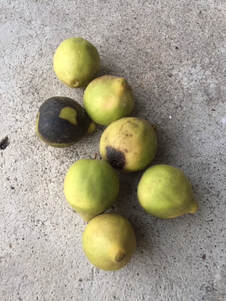 Not many people know we have our own wild walnuts here in California. It commonly grows along roads, oak lands, hilly areas, and produces small green fruits that contains a small nut. During fall the leaves turn a beautiful red gold color and it’s a fantastic tree to plant in native gardens as it attracts birds and animals. I have not tried eating the nuts, but read they are delicious and have a more robust walnut flavor than normal walnuts. Besides being a treat for foragers and animals alike, the green husks are used as a dye for fabric and hair. I’ve read about making ink from walnut, so it’s been a pleasure to finally make it during walnut season (mid summer to early fall). I grabbed a couple of the fruit (mostly collecting them on the ground), being mindful to leave plenty for our animal friends. The wild walnut tree provides shelter and food for animals and one should never harvest more than you need from one tree. The fruit had a particular odor…a bit unpleasant, but the ones I harvested were also very ripe (squishy), so maybe that’s why it smelled funny. After taking them home I smashed the fruit with a large rock to separate the nut from the husk (the green husk is where the color comes from). I wore gloves as the juice from the husk stains almost immediately. I put the green husks in a small pot with a little water. Within minutes, the water turned a dark brown. I let the mixture simmer for 10-15 minutes, then turned off the fire and let it steep for a few hours. The result is a nice brown ink – if I wanted a darker hue I needed more green husk. But I’m happy with this color and use it often in my natural color palette. You can see the color in the photos below. I also bought a couple ounces of Black Walnut hull powder and shall see if that produces any color, I have no doubt it will, and I am curious if there are any differences with using the fresh fruit versus the powder. Black walnut powder is also used to control intestinal worms and a poultice/compress of it may help with fungal infections on the skin. The dye made from the fruit makes a great hair dye for those who are looking for a deep brown/black color. |
My adventures navigating through the world of art, inspiration, and nature.
|
Copyright 2018 Christina Chan. All rights reserved.
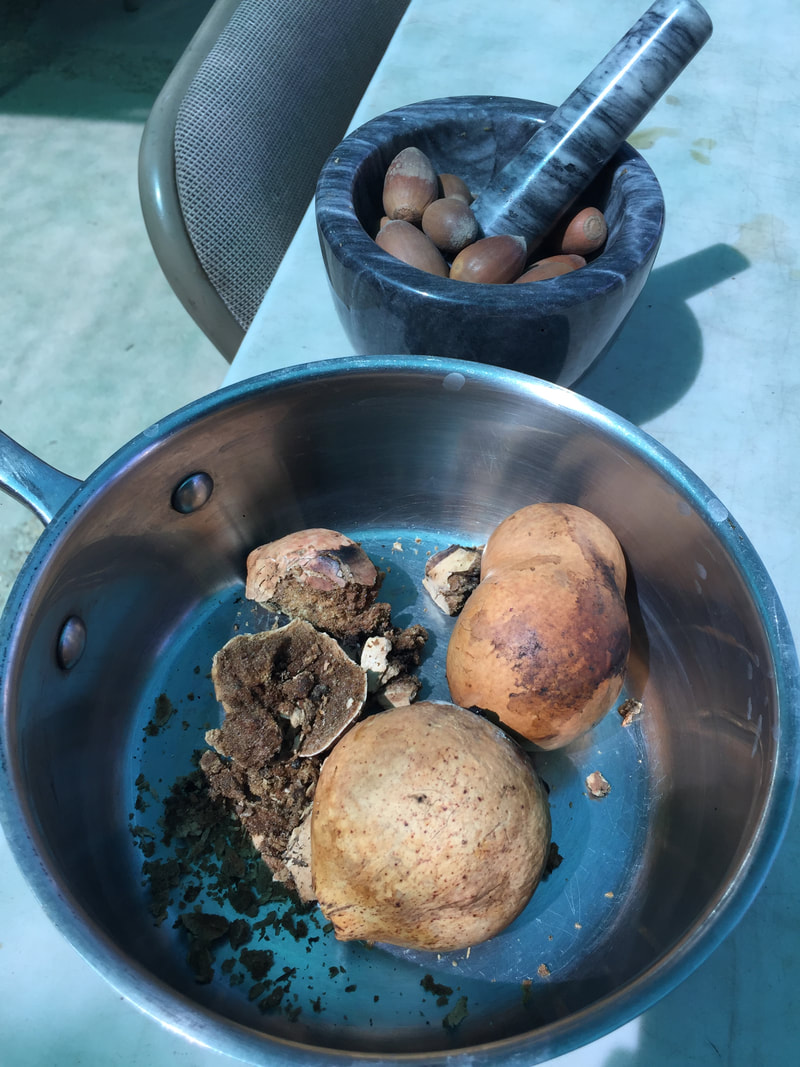
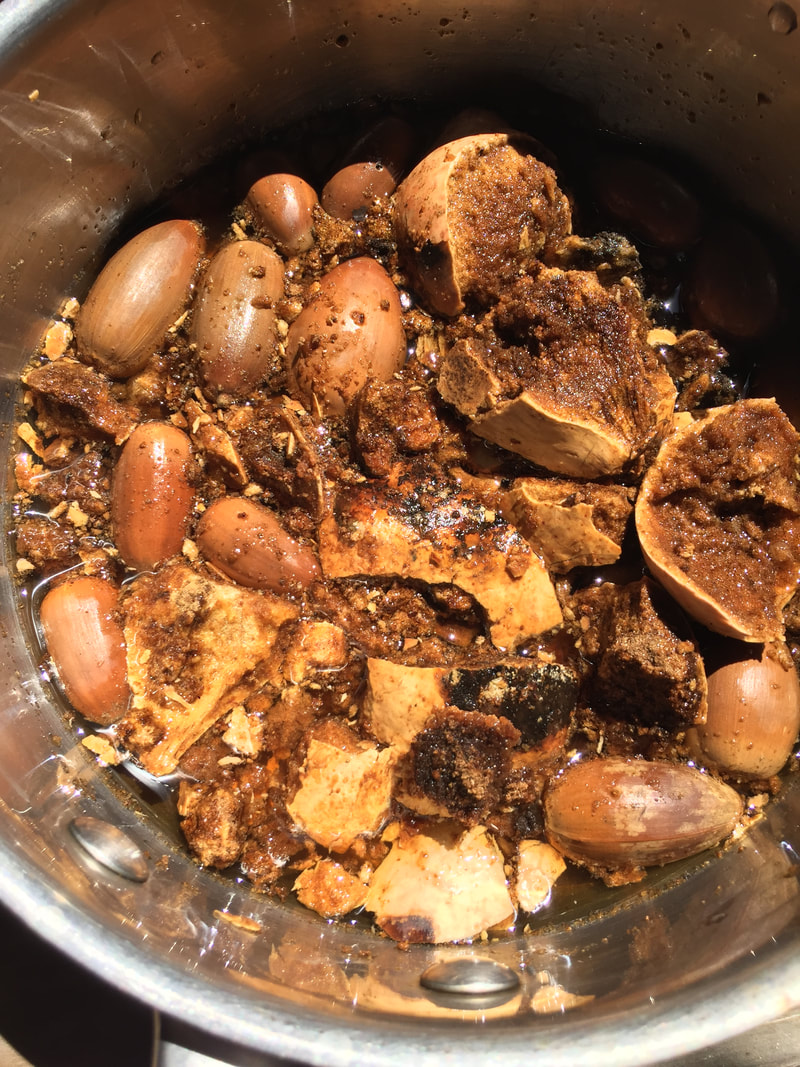
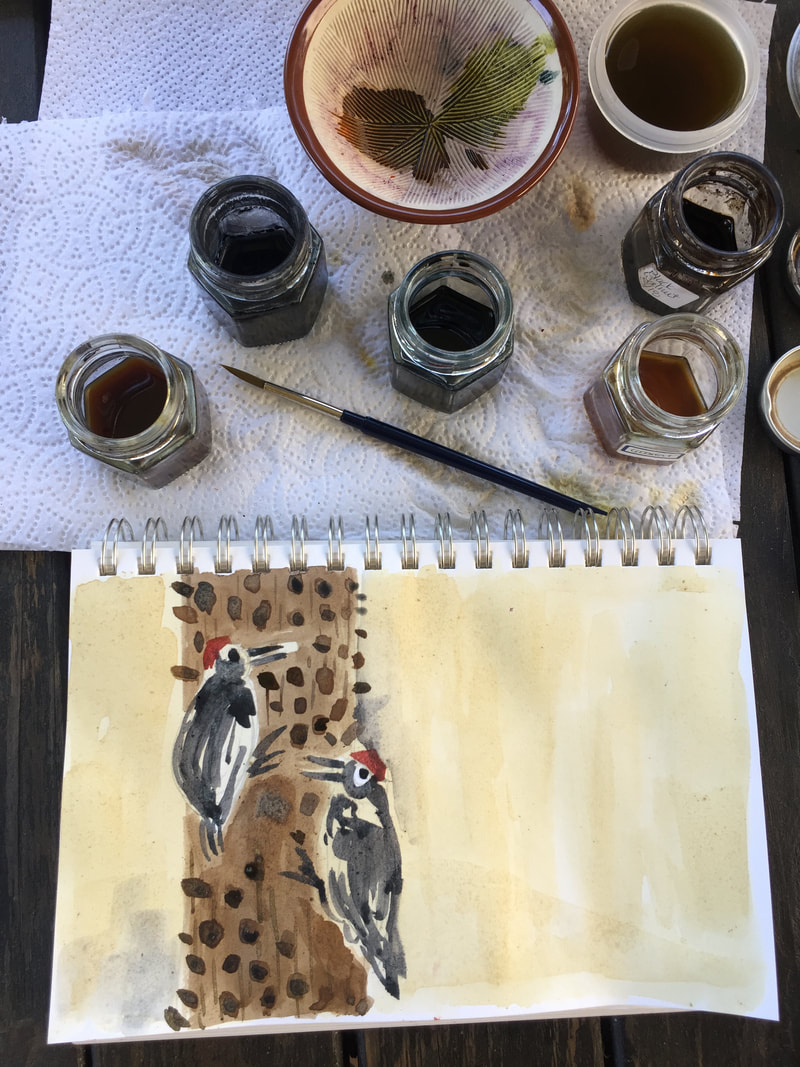
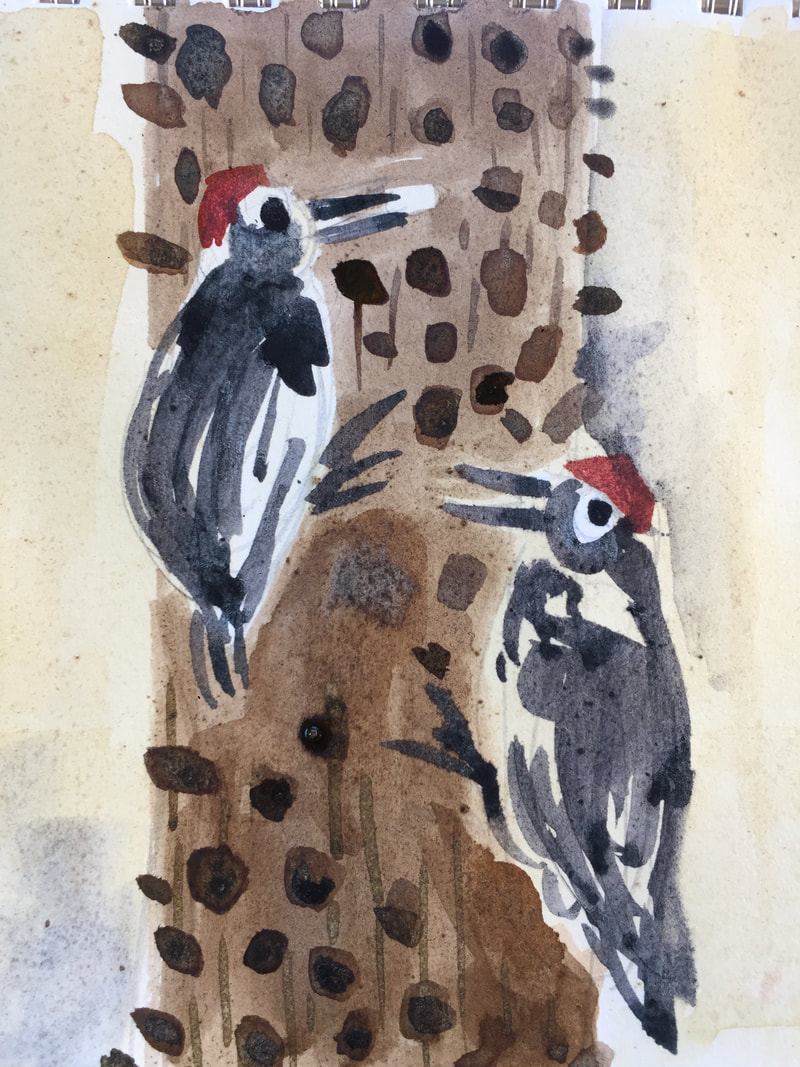
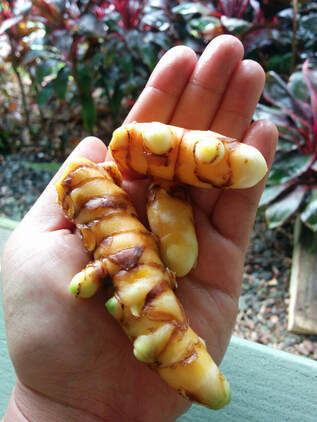
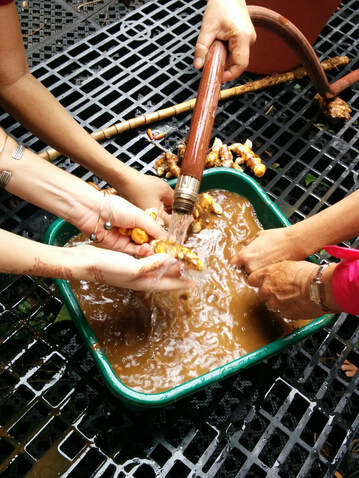
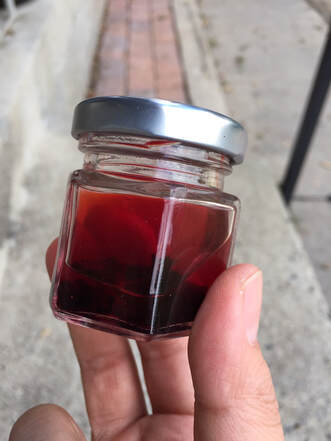
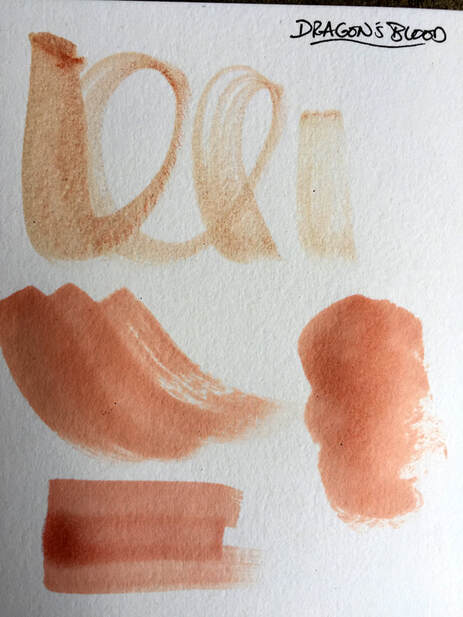
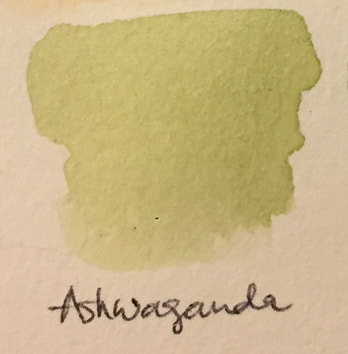
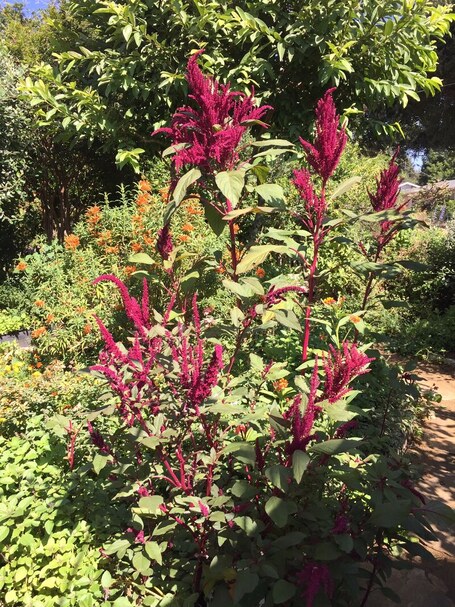
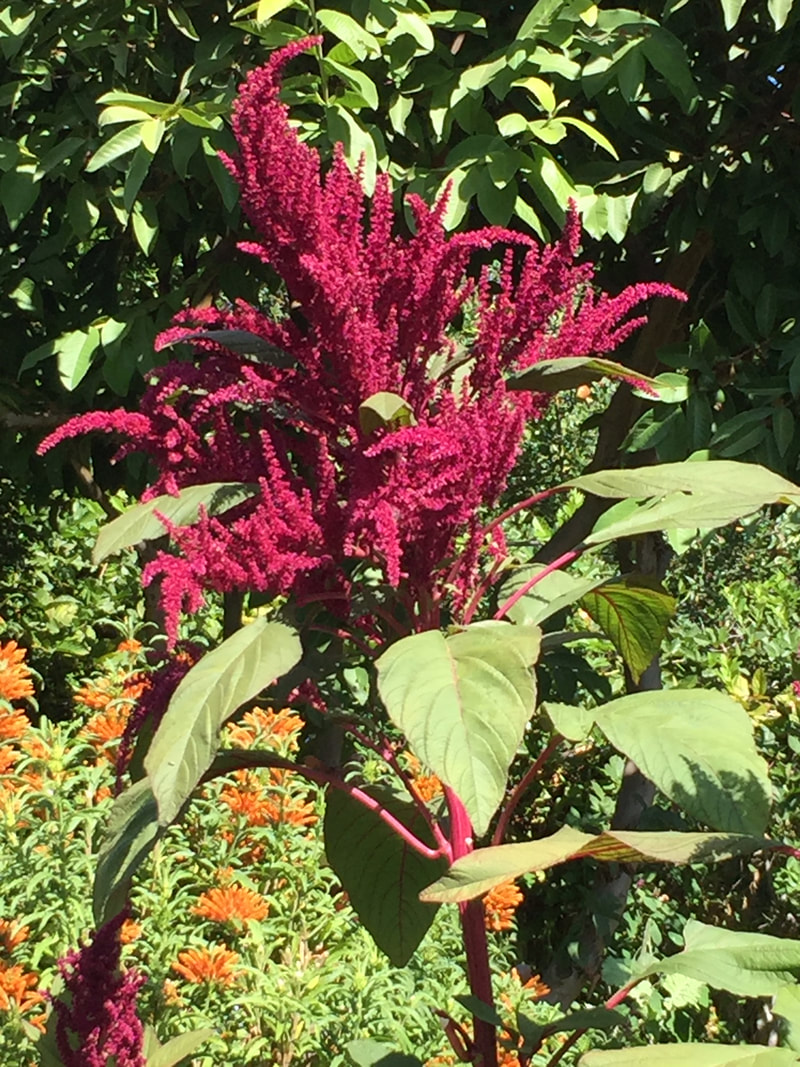
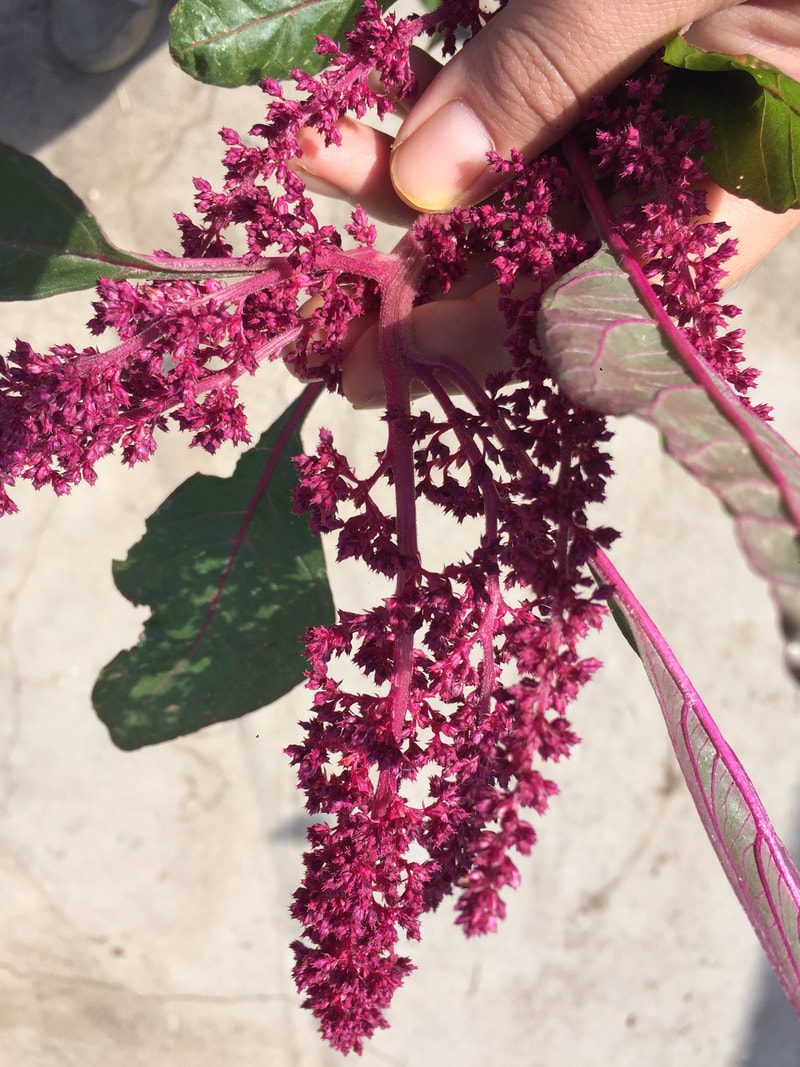
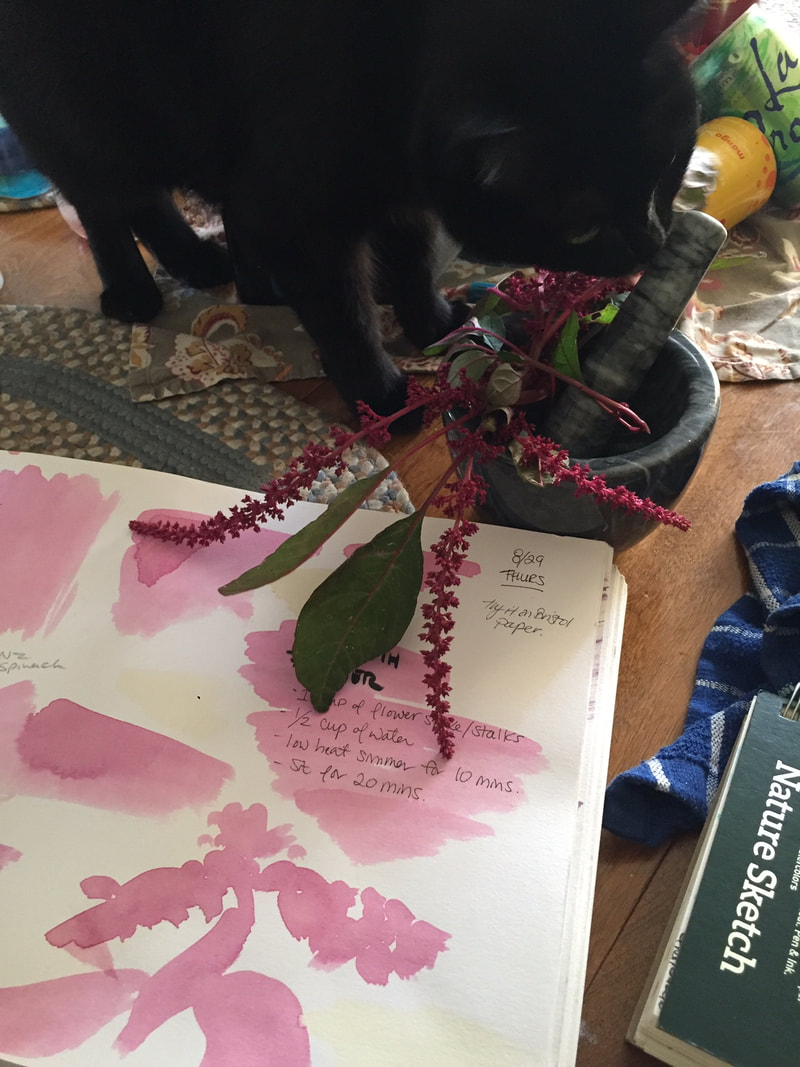
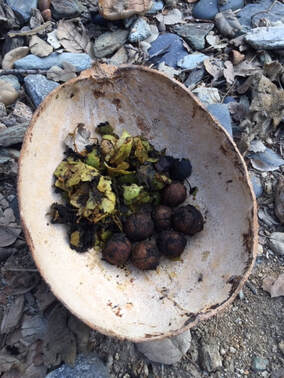
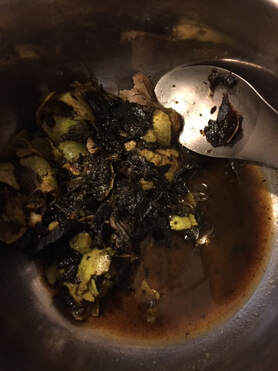
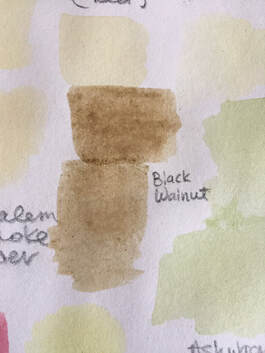
 RSS Feed
RSS Feed